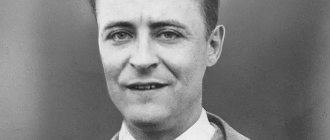Surely many have heard about Billy Milligan, a man with a mental diagnosis of “multiple personality”. American writer Daniel Keyes even wrote a book about Billy, supposedly based on real events. Although the author himself, in the preface to the novel, warns readers that the mysterious story of Billy Milligan may be partly or completely fictitious, because Keyes himself is quite skeptical about it. Was Milligan really sick with this strange disease and had 24 full-fledged personalities in his body, or was he just a brilliant actor-swindler?
At least once in his life, every person had to conduct a dialogue with himself. Some people do this, for example, when they are alone at home. Others talk to themselves regularly, and sometimes even publicly. In general, there is nothing strange or abnormal about this. Moreover, it has nothing to do with schizophrenia. It is simply our inner voice, our personality or character.
But what if in your own head a completely different person answers you? Or 24 other people? Despite the fact that in the book by Daniel Keyes the mysterious story of Billy Milligan was signed as a story based on real events, its veracity is still in doubt.
Who is Billy Milligan?
William Stanley Milligan, known to the public as Billy Milligan, is an American criminal and rapist who became widely known after his trial in Ohio. After three rapes and several robberies, Billy not only managed to escape punishment, but also became famous throughout the world thanks to his mental illness.
Billy's lawyers were able to prove to the court that their client was insane, and that all the crimes were committed not by Milligan himself, but by his other personalities without the knowledge of Billy himself. It's all very confusing, isn't it?
A little later it turned out that “multiple personality” developed in the young man against the background of violence suffered in childhood. But given the realities of modern society, a certain percentage of the planet’s population should also suffer from the disease that the hero of our article has. But for some reason the disease is still considered very rare.
In the late 1970s, the US criminal court, which had seen everything, wavered, but issued an unprecedented acquittal. In the dock was a young man who later became famous throughout the world - William Stanley Milligan, better known as Billy Milligan, bearer of 24 personalities. At least ten of these individuals were the main ones, and some of them committed several robberies and rapes. The main personality, according to psychiatrists and lawyers and the statements of the guy himself, did not know what he was doing. Billy was acquitted on all counts, but was sent for compulsory treatment. At the end of his sentence, more than 10 years later, he was released, declared sane and becoming the subject of a cult documentary novel.
The first documentary novel by science fiction writer Keyes about Billy Milligan was published in 1981, the second part was written 5 years later, and published another eight years later, but only in Japan. In the homeland of the author and his hero, in the USA, the book was never published. The story of Billy's misadventures in a psychiatric hospital for the criminally insane, better known as the "hospital in hell", was never allowed to be published. The institution in Lima, Ohio, became a nightmare incarnate, and the years Billy spent inside the system turned not into a comfortable rehabilitation, but into a period of merciless, fierce battle against humiliation, dehumanization, ritual dances around politics, cynicism and indifference of those who were just yesterday reveled in the sensation.
On the one hand, the author, as detached as possible from emotions and judgments, for the first time described such multiple splitting of the personality of a real person, scrupulously providing details. Keyes spent a lot of time collecting materials for the book, studying documents, talking with those involved and Billy himself, reading his diaries. On the other hand, the true story of a unique patient, in whose head dozens of people coexisted, from a deaf four-year-old boy to a shy 19-year-old lesbian, also became an impartial study of the pulsating topic of punitive psychiatry for many decades.
Recognized by experts, favored by the professional community, enthusiastically received by readers and reflected in popular culture, the first novel, ending with Billy's placement in the clinic, seemed to continue to exist outside the universe where Milligan was treated and healed. The second book, just as sharply and impartially, challenged the healthcare system and exposed all its ulcers. But describing an outlandish incident is one thing. But openly criticizing the System is completely different. The book "Milligan's Wars" is not acceptable for publication in the United States. The novel doesn't even have a Wikipedia page - as if nothing happened between the trial and Milligan's death in 2014. According to rumors, the situation will change when the film version of the sequel, the film “Crowded Room”, is released, where Oscar-winner Leonardo DiCaprio himself will play Billy.
The famous science fiction writer, winner of the legendary Hugo and Nebula awards, psychologist and professor of English language and literature, author of the novels “Flowers for Algernon” and “The Mysterious Case of Billy Milligan” does not need to prove his skills. The book about a gear-man's confrontation with the clumsy mechanism of power reads like a story of a creepy but exciting adventure, a deadly gamble and amazing resilience. Here suicide seems not just a point of no return, but the only happy escape from humiliation and torture. But it is rejected as an option - after all, this is an admission of defeat. This is not just a bestseller that exploded modern prose. This is the story of a man doomed to fight on multiple fronts, not so much within himself as within the trap in which he found himself. At the beginning of the book, Keyes left a dedication to "all survivors, hiding or not, and those who keep them hopeful...".
Milligan's Wars is more than an entertaining documentary. This is a reflection on where the boundaries of normality actually lie. And do these boundaries exist in principle?
Billy Milligan's childhood
Billy's family cannot be called prosperous. He was the second of three children of failed singer Dorothy Pesky and incompetent comedian Johnny Morrison. Their relationship was illegal because Morrison had a family from which he did not plan to leave. Despite this, the lovers managed to have three children.
Singer Dorothy Pesky and comedian Johnny Morrison
Billy's mother Dorothy Pesky was a very frivolous and joyful woman. Given this fact, she did not care for the children, and therefore they were left to their own devices. Father Johnny Morrison was also far from a model father. Under the oppression of his family, his mistress, five children, an unsuccessful career as a comedian and debts, he began to drink too much and twice tried to commit suicide. The second time he succeeded.
At the time of the incident, Billy Milligan was only 4 years old. As it turned out later, at the age of 3 another personality settled in Billy’s body, and by the age of 5 there were already four of them. After John's death, Dorothy briefly dated her first husband, Dick Jonas, and then found love in the real despot and tyrant Chalmer Milligan.
Among other things, the new man turned out to be a real sexual pervert. He not only periodically beat the mother and children for the slightest offenses, but also practiced rape and sadism. A little later in court, Billy's mother and sister will confirm this. But it's worth noting that Billy's stepfather was never convicted for his actions.
Billy's additional personalities, according to psychiatrists, arose at that time as a defense mechanism and the only possible option for a small child to escape from cruel reality.
Billy Milligan as a child
But since the boy had a split personality even before Chalmer Milligan appeared in his life, most likely, this tendency was innate. But here, too, many questions arise, because children quite often invent non-existent friends for themselves. And there is nothing strange about this.
A small disclaimer on Chalmer Milligan. After Billy became famous throughout the world, and the press published a statement about the numerous rapes he suffered as a child, reporters found Chalmer and asked him a couple of questions. According to the man, he physically could not find so much time to hurt Dorothy and her children.
The fact is that Chalmer worked as a leading engineer at Western Electric. His friends and acquaintances spoke of him as a decent person with good manners and character. When asked about the rapes, Chalmer Milligan replied that Billy's family were real liars, and that the boy himself did not get along with other children as a child and was a rather strange child.
Editor's Choice
The bestseller “The Many Minds of Billy Milligan” created a real sensation in literature and caused a public outcry. In the late 1970s, the attention of the American public and the global professional psychiatric community was focused on a unique trial. In the dock was a man accused of several robberies and three rapes, which he committed, but did not commit at the same time. Billy Milligan, the bearer of 24 personalities, ten of which were considered the main ones and suppressed the main one, was acquitted and sent for rehabilitation to a specialized institution, from where he was released 10 years later.
What happened in this decade? It’s as if these years are not on the personal map of the fictionalized hero, as if he disappeared into nowhere without a trace, and then reappeared from oblivion. Although Daniel Keyes, who became Billy’s involuntary biographer, followed the successful book released in 1981, five years later he wrote a sequel - based on conversations with Milligan himself, his diaries and conversations with those involved.
Are you keeping an eye on the dates? The book was published in 1994. In Japan. And only then did it become clear why the first part blew up the community, and the second could undermine the inviolable constitutional right of the state to dispose of human lives. “The Many Minds of Billy Milligan” was about a patient who is torn about in the labyrinths of his own psyche. "Milligan's Wars" tore the mask off the System. And this was no longer a challenge, but a direct threat.
What did the honored author, winner of the prestigious Hugo and Newball awards say so seditiously? How did a famous philologist and psychologist almost become an enemy of his native state, daring to publish a terrible truth, and what was this truth about? The first book revealed the features of dissociative identity disorder using the example of Billy's process. The second became a manifesto of freedom - Keyes no longer simply described the stages of Milligan’s healing, which lasted for 12 years. He exposed all the abscesses of the legal and medical systems, mercilessly highlighting all the horrors of American punitive psychiatry and harshly criticizing the methods of influencing special patients.
"Milligan's Wars" - if you take out the whole nightmare and the reality of what is happening - is an exciting adventure novel about the triumph of an unbroken spirit. The hero's path to salvation and himself. The story of the great resistance to dehumanization, cynicism and cruelty. This is a study of the boundaries of normality, within the framework of which conditionally healthy people who mock the conditionally sick with curiosity and not without pleasure do not fit.
Why read this book? Everything is very simple. Dissociative identity disorder is still a research phenomenon and we still have a lot to learn about it. Milligan's list of personalities is fascinating and impressive - among them there are men, children and women, modest and not so modest, talkative and reserved, malicious and shy. Keyes describes the mechanisms of healing and the frightening life and routines of specialized hospitals, including the famous Athens Mental Health Center.
This is an inspiring and intriguing novel that helps the reader answer their own questions. First of all, what exactly does he consider normal, and where do our internal boundaries of humanity lie?
American readers have a chance to see the book after the release of the film “A Crowded Room,” in which the main role will be played by Leonardo DiCaprio, who, according to him, has been dreaming about this for 20 years. The project has been underway since 2021. In Russia, Milligan's Wars was published by Inspiria this fall.
The Curious Case of Billy Milligan
According to this story, Billy Milligan's body contained 24 personalities. Each of them was different from the other and had its own individual knowledge and skills. Investigations showed that the crimes were committed by 2 individuals out of 24. It is also worth noting that Billy himself had suicidal tendencies, so the remaining 23 of his personalities seized power over the body, and Billy himself was sent to “sleep” for several years.
But the story of Billy Milligan would not have become so popular if he had not been a real criminal who broke the law. In 1975, a 20-year-old young man robbed a pharmacy and was sent to prison for 2 years. It is worth noting that there was no talk of any personalities at that time.
Almost immediately after his release in 1977, Billy raped three women. Since Milligan's fingerprints and photograph were already in the police file, it was not difficult to identify and find him.
Billy Milligan accompanied by police
During the trial, it turned out that Billy Milligan was sick and 10 other personalities lived inside him. Initially, the diagnosis sounded like acute schizophrenia. But a little later, psychologist Dorothy Turner determined that Billy suffered from multiple personality disorder (dissociative identity disorder). In total, the diagnosis was confirmed under oath by four psychiatrists and one psychologist.
However, no official documents confirming this diagnosis were made public or presented in court. After the hearing, no medical reports, no interrogation reports, no pages of the criminal case file, or any other documented papers were revealed. In addition, the trial of Billy Milligan itself was held behind closed doors without the admission of reporters, outside observers and jurors.
After which Milligan was sent for treatment to a psychiatric hospital - the Athens Mental Health Center. In the process of study and treatment, Dr. David Cole identified 14 more personalities in his patient, called “undesirable” because they had negative traits.
Athens Mental Health Center
In the psychiatric hospital, patients were treated with proven but non-working methods: shock therapy, cold, trans-orbital lobotomy, etc. Given all these treatment methods, not many managed to survive. And those who were lucky enough to remain in this world turned into vegetables rather than people.
At the Athens Mental Health Center, Milligan was treated by psychiatrist David Cole. As Billy himself later spoke about the therapy, the doctor did not really try to treat him; rather, he was too keen on studying this disease.
Taking advantage of his popularity, during his stay at the clinic Milligan managed to sell his own paintings, sell drugs and even make dubious deals for the resale of non-existent things.
A little later, the difficult patient was transferred to a public hospital in Lima under the pretext that the young man posed a threat to patients at the Athens Mental Health Center. The new place was a real prison for especially dangerous and mentally ill criminals. Billy stayed here for a little over a year, after which he was sent to a hospital in Dayton, and from there to a psychiatric clinic in Ohio.
State clinic-prison for especially dangerous and mentally ill criminals in the city of Lima
"I don't have a name." How the mysterious story of Billy Milligan ended
Despite Lindner's continued attempts to prevent Milligan from communicating with the author of this book, Goldsberry's protest to the prosecutor's office forced the hospital to lift the restrictions. A few days after the trial, Deputy Attorney General A. J. Belinki personally called the writer to inform him that Lindner's order had been revoked and he was allowed to visit Milligan at any time during visiting hours. The guards were ordered to let him and the tape recorder through.
The writer arrived in Lima on the twenty-fifth of April, one thousand nine hundred and eighty. In his briefcase was the manuscript of The Mysterious Case of Billy Milligan. He entered the building and walked along the corridor between automatic metal bars. While waiting for the second grate to open, the writer carefully examined the huge colorful landscape on the thirty-meter wall, which he had already heard about from those who had been to Lima.
Snow-capped mountain peaks, a large lake and islands overgrown with pine trees and other trees in autumn colors. The gaze shifted from the humpbacked wooden bridge, the dirt road with a gate to the house on the lake and the boat with the fisherman.
Although the mural was signed "Billy", the writer knew that only Tommy painted landscapes. He was glad that Tommy was allowed to leave the block and do what he loved most. While this young man, a master at escaping from handcuffs, had the opportunity to draw, he satisfied his craving for freedom through art.
The second grate moved to the side, and the writer entered.
In the inner corridor of the third block, patients lined up to take Polaroid photos with their families in front of a mural depicting a lighthouse.
The picture in the visiting room reminded the writer of the place where Billy's sister Katie took him. He recognized the covered bridge and New Jerusalem Road, which led to the farm in Bremen where Billy's stepfather, Chalmer Milligan, had tortured and raped the eight-year-old boy, according to court records.
When the orderly brought Billy in, the writer immediately realized (first by his facial expression, and then by the lack of emotion, slow speech and limp handshake) that the confused young man who walked towards him was not the Teacher. Billy was only partially fused.
-Who am I talking to now? - the writer whispered when the orderly was far enough away.
- I don't think I have a name.
- Where is the Teacher?
Billy shrugged.
- Don't know.
“Why didn’t he come out to talk to me?”
- Ragen cannot join. It's dangerous here.
The writer understood. As Dr. Marlene Kokan pointed out at the Harding Clinic, if a Ragen merges with the others, it becomes less effective as a Protector. Since this is a prison-type hospital, the Ragen needs to remain a separate individual to control who occupies the Spot.
The writer suspected that before the date, Billy was deliberately given a high dose of sedatives so that he could not tell the outside world about the conditions in the hospital and his treatment.
However, the local doctors did not know that in the Athens psychiatric clinic (regardless of whether he was given medication or not), Milligan often began a conversation with the writer as one person, and then, carried away by the subject of discussion, fused into the Teacher. Since the individuals in the “I don’t know who I am” phase were once part of the Teacher, they all heard about the book.
“I suspect that Ragen will want to know whether I kept my promise and whether I attributed to him other crimes for which he is still accused,” said the writer. “If he merges with the others and the Teacher comes, please let me know.”
Milligan nodded and began to read the manuscript.
A little later the writer went to the restroom. When he returned, Milligan looked up, smiled and pointed to page number twenty-seven, where he had written: “Teacher.”
It was impossible not to recognize him.
He and the writer greeted each other, remembering that they had not seen each other since that very short meeting at which the Teacher was present and Dr. Milky testified.
The teacher, who always loved precision, suggested making several amendments to the manuscript:
- You write: “Allen entered the bedroom where Marlene was smoking a cigarette.” She didn't smoke.
— Make a note in the margins. I'll change.
A few minutes later, the Master shook his head:
- Here: “He robbed gays at a roadside parking lot and used his mother’s car to do it.” To be precise, the car belonged to me, although it was registered in her name. Maybe it needs to be changed? For example, “he used his car, which was registered in his mother’s name”...
“Scribble there,” the writer answered.
The teacher corrected the Nativity scene in which Billy's sister Katie and his brother Jim present evidence to Kevin that he committed the attacks at the roadside site.
He suggested that the writer write: “Besides, you abandoned your family a long time ago.”
“You see, Jim left, and Billy now had to protect his mother.” He believed that Jim had run away and simply washed his hands of it. That evening, Kevin threw offensive reproaches at Jim, but this was because he believed that Jim had abandoned them - little Katie and mom. He leaves at seventeen, goes to college, joins the Air Force and leaves me, the only man in the house, to protect his mother and sister, who is still a child herself. And I'm only fifteen and a half. Jim was supposed to protect them, he is the eldest. I believed that he abandoned his family.
“This is important,” the writer said, “because I described the scene through Jim’s eyes, based on our telephone conversation with him.” Now you can fix it. Did you just say all this then or are you making it up now, looking back in time?..
- No, that's what I told him. Deep down I was always angry that Jim abandoned us.
Did Kevin feel the same way?
- Oh yeah. Kevin knew that Jim had abandoned us. He was not willing to take responsibility, but he was afraid for his mother and Katie and tried to protect them.
Reading further, the Teacher shook his head:
- This character says: “Yes, you understand this.” He would never say that. In their language it would be: “Yeah, you’re dragging your feet in this.” You'll have to redo it. These two must talk like louts and bandits.
That's what they were. Very low level, continuous abuse. In short, write as you want, but they should not speak literary English.
“Make a note in the margins,” the writer asked.
The teacher wrote: “More swear words.”
Book writing process
While in a hospital in Ohio, Billy Milligan contacted Daniel Keyes and asked him to write a book about him. The writer agreed to do this on the condition that he would be provided with more information than lawyers, psychiatrists and the media. To which the young man replied that he remembered almost nothing about what happened.
Keyes was ready to give up on this idea, but a few days later the incredible happened. Billy Milligan said he was cured. He claimed that his personalities merged into one - the Teacher - and he remembers almost everything. Coincidence? Don't think. So, instead of just merging into Billy, all the personalities decided to invent a new one and merge into it?
The mystery of Billy Milligan: why everything you know about him may not be true
The reader is great because he has the right to ask questions that the author himself did not dare to answer in relation to the plot and text. This is usually done in the form of a review, but not in the case of Daniel Keyes' novel The Many Minds of Billy Milligan. Here questions arise not around the plot, language, method of presentation, but around the main character - Billy Milligan and the existence of his multiple minds.
Billy is not a fictitious person, he really existed, committed crimes and was treated in a psychiatric hospital with a diagnosis of “multiple personality.” He gained worldwide fame in the 80s, but died relatively recently, in 2014.
Daniel Keyes
However, for more than 35 years of the existence of the Milligan phenomenon, not a single fact has been made public confirming the plausibility of his story: not a single scientific study, not a single court document and not a single video recording - nothing that could de facto / de jure confirm the reality metamorphoses occurring with Billy. And what is considered an irrefutable truth is borrowed from a novel that indirectly claims to be a documentary. Even the “all-powerful and all-knowing” Wikipedia relies on three sources, two of which are the works of Keyes.
In the introduction to the novel, Daniel Keyes writes: “All the material in this book I received from this whole Milligan, from his other personalities and from sixty-two people whose paths crossed with him at different stages of his life. Scenes and dialogue are recreated from Milligan's memories. Therapy sessions are taken directly from video recordings. I didn't make anything up."
Billy Milligan
In other words, Keyes is talking about evidence and powerful facts that speak in defense of Billy himself and his story. And he gives 3 arguments: conversations with Billy, 62 people and therapy sessions. But what if we sat down to consider these points with a grain of salt:
Argument 1
Keyes draws on conversations that took place between him and Billy. If we believe that they really took place, then how accurate is it to consider them as objective evidence? The answer is obvious. There is no reason.
Argument 2
62 people “whose paths crossed with him at different stages of life.” Obviously, we are talking about Billy's family, friends and acquaintances. Nevertheless, you will not be able to find on the Internet or in the media at least one statement, interview or story of a person who knew Milligan. It seems that such material simply does not exist. Americans, who are ready to make a show of the “dirty laundry” of any even slightly famous person, earn money and fame, are modestly silent in the case of Billy. No one ever gave interviews, told anything or wrote memoirs. Although the story itself has been well replicated and at one time brought considerable dividends to the (still living) Keyes. The only surprise is that those 62 people the author talks about reliably keep Billy’s secret? And why has the media never brought up at least something related to Milligan’s diagnosis?
And these are American journalists who happily stirred up a political scandal from the story of a sexual relationship with no one but US President Bill Clinton himself and White House intern Monica Lewinsky. So many details of the president’s personal life surfaced thanks to Levisky’s friend Tinda Tripp, who even recorded conversations with Monica and made them public at the first opportunity. Statements and words from Monica's acquaintances and friends were recorded in the media, and even several books were written. But nothing about Milligan. More than a dozen years have passed, and Billy's story has been told only by a science fiction writer.
It is also interesting that all of these 62 people were not called specialists by Keyes himself. In other words, these are ordinary people who happened to cross paths with Billy: they are not philologists, linguists or musicians who could professionally assess Billy’s level of knowledge in the field of playing musical instruments or in the field of his knowledge of the Arabic language. It is also unknown who determined that, for example, one of Milligan’s personalities, Rejen Vadaskovinich, speaks and writes perfectly in Serbian and Croatian.
Billy Milligan
Argument 3
Therapy sessions taken from video recordings, in fact, also cannot serve as irrefutable evidence. And primarily because this is a therapy session, and not a video recording of a forensic psychiatric examination. The fact is that therapy, by its nature, can be different, and even more so among healers of human souls. As one famous psychiatrist said: “We treat people we don’t know well with little-studied methods for diseases completely unknown to us.”
Billy Milligan
It would seem that one video we saw could dispel all doubts - here it is, Billy Milligan's hairdryer. But alas, there are simply no published videos. There are short clips and a couple of documentaries floating around the Internet, but they only feature one-second inserts with Billy. These videos show a man of completely ordinary appearance, neatly dressed and outwardly sympathetic. He has the usual gestures of an ordinary adult, or at least that’s the impression he gets. There is nothing in these videos that could be filed under “abnormal” and, importantly, there is no evidence of multiple personality disorder.
Billy Milligan's arrest
That is, it was not possible to verify anything here either. Although we can say with confidence that the complete recordings still exist somewhere, since inserts from them are used in the clips. And if the story and the disease itself have already been so widely circulated, then why are a couple of videos that show direct evidence of a change of personalities a “medical secret”? Why, as soon as the matter concerns some facts, and not speculation, it turns out that there is nothing?
Billy Milligan in court
Conclusion
Billy Milligan, having spent more than 11 years in prisons and psychiatric hospitals, finally stops “carrying” 24 other personalities and becomes just Billy Milligan. In 1988, Billy was declared completely cured, and after 3 years he was able to again become a full-fledged member of the community.
This material is not an attempt to question Billy Milligan's diagnosis of multiple personalities. These are just questions asked by every reader who has even a drop of skepticism in his worldview. And not the reader of the novel, but the reader in general, in the broad sense. Probably, few people would argue that building all your arguments and conclusions only on the basis of the novel is a mistake. But what if we have nothing else at our disposal?
Based on materials from truecrime.guru
Liked? Tell your friends:








